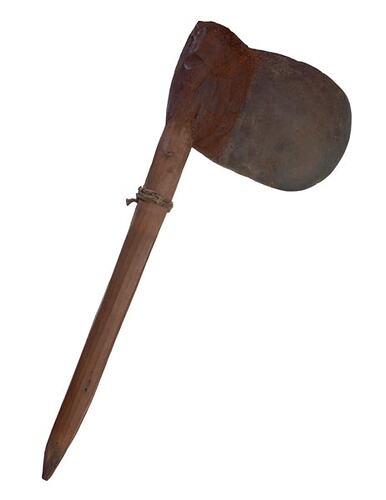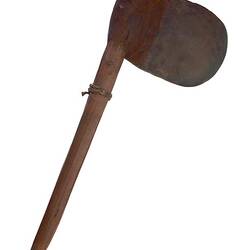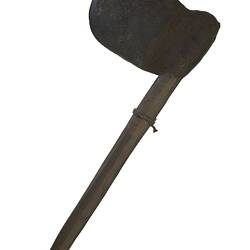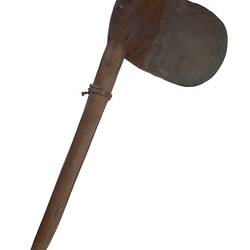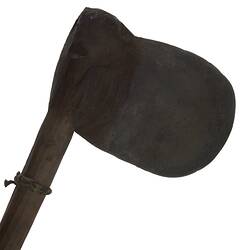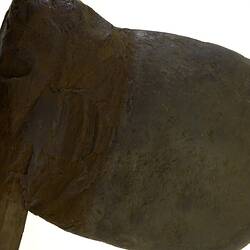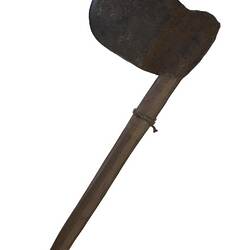Summary
The Warumungu and Tjingali groups made axes and picks like this one for their own use and for trading. They also made knives with flakes of quartzite, which were similarly traded. Axe heads were produced from diorite and usually took several days to make. A suitable stone block is found and carefully chipped into a shape, and the edges then smoothed on a flat quartzite stone using water and sand as a grinding medium. Once all traces of the chipping have been removed, a split wooden handle is attached, using spinifex resin and vegetable fibre string. Wood of the mulga tree (Acacia aneura) was used for the handles of both the axes and picks. The heads and blades are tied onto a piece of split mulga with string made from human hair or vegetable fibre. The join is strengthened with resin, collected by burning the leaf stalks of a species of 'Triodia', commonly known as spinifex or porcupine grass, on a piece of bark. The resin was moulded around the wood while still warm, and it set very hard when cold.
Physical Description
A hafted hatchet made with an edge ground stone axe head. It is secured with resin to a handle made from a single piece of wood bent around head and tied with vegetable fibre below the head. The resin is coated in natural pigment of red ochre.
More Information
-
Object/Medium
Axe, hafted
-
Maker
-
Locality
-
Date Produced
-
Date Collected
-
Object Measurements
540 mm (Length), 220 mm (Width), 65 mm (Height)
-
Keywords
-
Collection Names
-
Type of item
-
Discipline
-
Category
-
Collecting Areas
